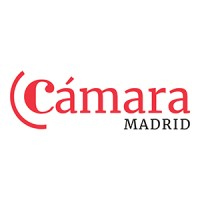Well, now you’re here, you’re not going to waste the opportunity to try some great local dishes, right?  And there are plenty of them! In this blog, we’ll tell you what and how to order so you don’t miss out on any of the most typical dishes.
And there are plenty of them! In this blog, we’ll tell you what and how to order so you don’t miss out on any of the most typical dishes.
Tomando el aperitivo un domingo
One of the most long-standing traditions in Madrid is to meet with friends on a Sunday morning for an aperitivo round about 12 o’clock. You’ll see groups of friends of all ages, with prams and kids too standing outside a bar and having a drink and snacks before their big late lunches at 3 o’clock. (The tradition has also been known to extend over lunchtime and just stay there to eat with the tapas too) The typical thing to have is either a caña (small beer) or a vermut (a red martini) – this latter drink is often served on tap (de grifo) and is not the usual bottle-bought variety. It is served with a lot of ice and slice of orange and in summer, to make it a long drink (as it is usually high in alcohol content!) with gaseosa (a Spanish, no-calorie, sugar-free type of lemonade). ¡Delicioso! And don’t forget that the best thing of having a drink in a bar in Spain is that they’ll always give you a free small snack (tapa) with it too! Depending on the generosity of the bar, this could be a small dish of paella, or stew (guiso) or olives (aceitunas) or crisps (patatas fritas).
NB: Do you know why they call these bar snacks tapas? The most accepted version of the origin of the tapa is because the bartender would cover (tapar) the customer´s drink with a small plate to keep the flies out of it and on the plate they’d put a bit of food.
“Un vermut, por favor (con gaseosa).”
“Una caña y dos dobles, por favor.” (A small beer and two large ones please)
Ir de tapas / tapear
If anyone suggests the above – they mean to do a bit of bar-hopping and go to different places to have a drink and the accompanying bar snack. If you want something a little more substantial, you can order raciones (a bigger plate of something that isn’t free) that you can all share. You order a media ración (half ration) as well. This could be cheese (queso manchego), ham (jamón serrano), or some fish dishes like chopitos (tiny fried cuttlefish), bienmesabe/cazón (dogfish), calamares (squid rings), pulpo (octopus), sepia (cuttlefish), gambas (prawns), ensaladilla rusa (vegetables in cubes in mayonnaise sauce), torreznos (pork scratchings/rind) or tortilla española (Spanish omelette, made with eggs, potatoes and onion), bravas (so called because the roasted potato cubes come with a sauce of spicy tomato), croquetas (croquettes made of béchamel sauce with ham, mushroom etc. and covered in breadcrumbs.
“Vamos a compartir todo.” (We’re going to share it all.)
“Un poco más de pan, por favor.” (A bit more bread please)
NB: IN the north of Spain, in the Basque country, the bars are famous for their tapas but there they call them pinxtos. They are usually of very good quality but you have to pay for them – often around 1 or 2€ each. With a few of these you will have eaten enough for a full meal!
Desayunar fuera
The Spanish are not generally fond of big breakfasts at home, many prefer to have a quick coffee at home before leaving and then around 11am, they’ll go out to a bar and have another coffee and a tostada, croisan o pincho de tortilla, probably with workmates. It is also a great way to check whether you’ve done your homework correctly with your Hablamos classmates
It’s a sociable time to have a break and bite to eat. This will see them through until lunchtime, normally around 2.30pm.
Comer un menú del día
The Spanish tend to eat their main meal of the day at lunchtime, a tradition which comes from when everything used to close down at lunchtime between 2 and 5pm and people used to sleep a siesta at home. Those times have now virtually disappeared but the tradition remains to eat a more substantial meal in the middle of the day. If you are working, many people will go for a menu of the day at a local bar or restaurant. They are very good value for money (around 12€) and will include un primer plato (first course), un plato principal (main course), postre (dessert) o café (coffee or tea) y una bebida (a drink) of water, wine, beer or fizzy drink. For one person, it really isn’t worth shopping for and cooking all that for that price, is it? ha ha! The menú del día is normally served from Monday to Friday between 1:30-3:30pm.
Typical first courses:
Ensalada, sopa, pasta, pescado frito (fried fish), verduras (vegetables).
Main courses:
Cocido madrileño, a local dish of a first course of soup (sopa) with pasta, followed by a main course of chickpeas (garbanzos), potatoes, meat, carrots and cabbage (repollo). Very tasty! ¡Riquísimo!
Guisos (stews), pescado (fish), filete (steak)
Salir a cenar
A typical pastime on Spain is to go out for dinner, usually at the weekend. This can take the form of anything from a light meal of raciones or a more elegant meal and is usually eaten between 8:30-10:30pm.
“Me gustaría reservar una mesa para dos a las 9.” (I’d like to book a table for two at 9)
“Tengo una reserva para dos personas a las 10.” (I have a reservation for two at 10pm.)
“¿Nos puede dar una mesa en la terraza?” (Can we have a table on the terrace?)
Salir de copas
If anyone asks you to do this, you know it will be a late night! The Spanish tend to go out after dinner around 11pm. Copas are normally considered to be spirits like un gin-tonic, un ron con coca-cola, etc. and often taken in a pub (they pronounce it paf!) or a bar or in a club. It is quite normal to either pay an entrance fee to a club but this will often include a drink (una consumición).
So, now you know how to eat and drink and order the typical things in Madrid – take advantage and go and try out your new knowledge! All this talk is making me feel hungry – I might just pop out now! ha ha!






